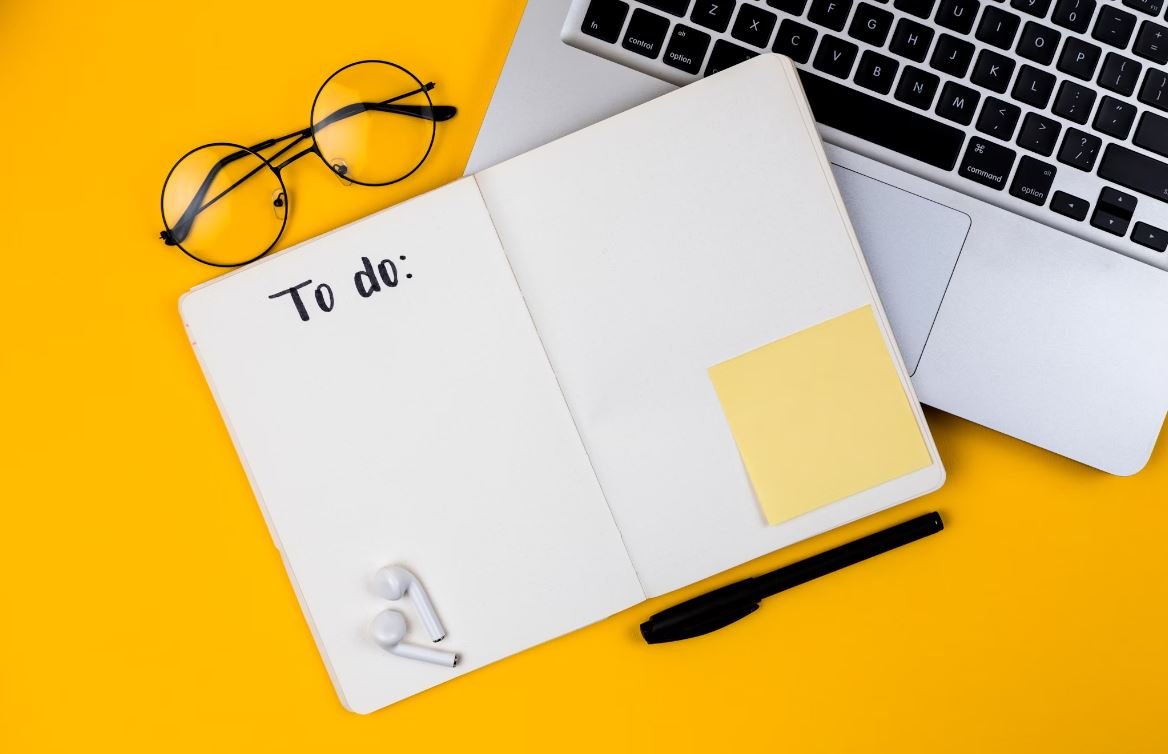Record Live Podcast
Recording a live podcast can be an exciting and engaging way to connect with your audience. The process involves capturing the audio and possibly video of a live podcast event, allowing for real-time interaction and creating a unique experience for both the host and the listeners. In this article, we will explore the steps involved in recording a live podcast and provide valuable tips to ensure a successful recording.
Key Takeaways:
- Recording a live podcast adds an interactive element for both hosts and listeners.
- The process involves capturing audio and possibly video in a live event setting.
- Researching and planning are essential for a successful live podcast recording.
1. Plan and Prepare: Before the live recording, make sure to plan the content, format, and any special guests or segments to ensure a smooth flow throughout the event. Additionally, test the recording equipment and ensure everything is in working order.
2. Choose a Suitable Venue: Select a venue that can accommodate your podcast setup and is comfortable for both you and your audience. Consider factors such as acoustics, seating arrangements, and any necessary technical facilities.
3. Engage with the Audience: Encourage audience participation through Q&A sessions, live chat, or even inviting select audience members to join you on stage. This helps create a sense of collaboration and adds excitement to the recording.
Recording Equipment
| Equipment | Features |
|---|---|
| Microphones | Ensures clear and high-quality audio capture for hosts and guests. |
| Audio Mixer | Allows control over audio levels and mixing multiple microphones. |
| Headphones | Allows hosts to monitor the audio quality during the live recording. |
Remember, the success of a live podcast recording depends on thorough preparation and audience engagement.
4. Set Up Recording Equipment: Test all equipment before the event, including microphones, audio interfaces, headphones, and any supplementary devices. Ensure proper connection and levels are adjusted for optimal audio quality.
5. Manage Sound Levels: During the live event, closely monitor the sound levels to avoid any distortions or background noise. You may need to adjust levels in real-time or have someone dedicated to sound engineering.
Tips for a Successful Live Recording
- Prepare a detailed run sheet to keep track of segments, timing, and cues.
- Have backup recording devices in case of technical issues.
- Engage with the audience by incorporating interactive activities or games.
- Create a comfortable and inviting atmosphere for both hosts and guests.
Post-Recording Editing and Sharing
| Editing Software | Features |
|---|---|
| Adobe Audition | Professional audio editing tools and effects. |
| GarageBand | Easy-to-use editing software for Mac users. |
| Audacity | Free and open-source audio editing software. |
6. Edit and Enhance: After the live recording, review the audio/video files and edit out any unnecessary segments, improve the audio quality, and add any desired enhancements.
7. Share and Promote: Once the podcast episode is edited and ready, upload it to your preferred podcast hosting platform and promote it through your website, social media, and other channels to reach your audience.
A successful live podcast recording involves thorough planning, engaging with the audience, and proper post-recording editing.
By following these steps and utilizing the right equipment and strategies, you can create an unforgettable and impactful live podcast that resonates with your listeners.

Common Misconceptions
Misconception 1: Recording a live podcast requires expensive equipment
- Some podcasters believe that they need to invest in high-end equipment worth thousands of dollars to record a live podcast, but this is not true.
- With a basic USB microphone and a laptop, you can easily record a live podcast without breaking the bank.
- Many affordable options are available in the market that offer good sound quality and ease of use.
Misconception 2: Recording a live podcast is a complex and technical process
- It is a common misconception that recording a live podcast requires advanced technical knowledge and skills.
- In reality, modern podcast recording software and platforms have made the process much simpler and user-friendly.
- With just a few clicks, you can set up a live recording session and start capturing your podcast in real-time.
Misconception 3: Recording a live podcast means no editing or post-production
- Some people believe that recording a live podcast eliminates the need for any editing or post-production work.
- While it is true that a live podcast captures the raw and unedited content, editing and post-production can still enhance the overall quality.
- Post-production allows you to remove any mistakes, add intros or outros, and improve the audio quality before releasing the final episode.
Misconception 4: Live podcasts don’t allow audience interaction
- Contrary to popular belief, live podcasts can be interactive and engaging for the audience.
- Through live chat features or social media integration, podcasters can involve their listeners in real-time discussions and Q&A sessions.
- Live audience engagement adds a new level of excitement and interactivity to the podcasting experience.
Misconception 5: Recording a live podcast leads to more mistakes and unprofessional content
- While recording a live podcast may leave room for errors, it does not necessarily result in unprofessional content.
- With proper preparation and practice, podcasters can deliver high-quality content even in a live setting.
- Mistakes can always be edited out during post-production, ensuring a polished final product.

Podcast Listenership by Age Group
According to recent data, podcast listenership has seen significant growth across different age groups. The table below shows the percentage of individuals in each age group who listen to podcasts regularly.
| Age Group | Percentage of Podcast Listeners |
|---|---|
| 18-24 | 42% |
| 25-34 | 54% |
| 35-44 | 38% |
| 45-54 | 32% |
| 55+ | 26% |
Most Popular Podcast Genres
Podcasts cover a wide range of topics, but some genres are more popular than others, as indicated in the table below.
| Genre | Percentage of Listeners |
|---|---|
| True Crime | 28% |
| News & Politics | 25% |
| Comedy | 18% |
| Education | 15% |
| Technology | 14% |
Podcast Consumption by Gender
The table below presents the breakdown of podcast consumption based on gender.
| Gender | Percentage of Podcast Listeners |
|---|---|
| Male | 54% |
| Female | 46% |
Top Podcast Platforms
Podcasts can be accessed through various platforms. The following table displays the most popular podcast platforms among listeners.
| Platform | Percentage of Listeners |
|---|---|
| Apple Podcasts | 65% |
| Spotify | 25% |
| Google Podcasts | 10% |
Podcast Duration Preferences
Listeners have varying preferences when it comes to podcast duration. The table below shows the percentage of individuals who prefer different lengths of podcasts.
| Podcast Duration | Percentage of Listeners |
|---|---|
| Less than 30 minutes | 30% |
| 30-60 minutes | 42% |
| 60-90 minutes | 18% |
| More than 90 minutes | 10% |
Podcast Listening Situations
The table below highlights when and where podcast listening is most common among individuals.
| Situation | Percentage of Listeners |
|---|---|
| Commuting | 45% |
| Exercising | 30% |
| Cooking | 15% |
| Relaxing | 10% |
Advertising Impact on Podcast Listeners
Advertisements play a role in podcasting. Below is the percentage of listeners who claim they have taken action or purchased products based on podcast ads.
| Action | Percentage of Listeners |
|---|---|
| Purchased products/services | 38% |
| Visited advertiser’s website | 25% |
| Engaged with podcast host | 18% |
| Other actions | 19% |
Podcast Listening Frequency
This table showcases the frequency at which individuals listen to podcasts.
| Listening Frequency | Percentage of Listeners |
|---|---|
| Every day | 40% |
| A few times a week | 30% |
| Once a week | 15% |
| Less than once a week | 15% |
Podcast Listener Preferences for Hosts
Listeners have preferences regarding the characteristics they appreciate in podcast hosts. The table below highlights the percentage of listeners who value various host traits.
| Host Traits | Percentage of Listeners |
|---|---|
| Knowledgeable | 58% |
| Engaging | 48% |
| Funny | 25% |
| Professional | 20% |
In summary, podcast listenership has experienced notable growth across age groups, with the highest percentages in the 25-34 age range. True crime podcasts and news and politics podcasts rank as the most popular genres. Interestingly, there is a fairly equal split of listeners between males and females. The majority of listeners access podcasts through Apple Podcasts, followed by Spotify. Preferences for podcast duration vary, with 30-60 minute shows being the most popular. Commuting and exercising are common situations for podcast listening. Advertisements play a significant role, with over a third of listeners reporting purchasing products or services based on podcast ads. Finally, listeners value knowledgeable and engaging hosts. These trends demonstrate the increasing popularity and influence of podcasts in today’s media landscape.
Frequently Asked Questions
What equipment do I need to record a live podcast?
To record a live podcast, you will need a good quality microphone, headphones, an audio interface, a computer with recording software, and a stable internet connection.
What recording software should I use for my live podcast?
There are several popular recording software options available for live podcasting, such as Adobe Audition, Audacity, and GarageBand. Choose the one that best suits your needs and preferences.
How can I ensure high audio quality for my live podcast recording?
To ensure high audio quality, make sure you use a good quality microphone, position it properly, minimize background noise, and monitor the audio levels during the recording process.
Should I use a script or prepare an outline for my live podcast?
It is generally recommended to have a script or at least an outline prepared for your live podcast. This helps you stay organized, reduces the chances of going off-topic, and ensures a smoother flow of conversation.
What steps should I take to promote my live podcast?
To promote your live podcast, consider utilizing social media platforms, creating engaging graphics, collaborating with other podcasters or influencers, and engaging with your audience through contests or giveaways.
How long should my live podcast episode be?
The length of your live podcast episode depends on your target audience, content, and engagement level. Generally, it is recommended to keep the episode between 20 minutes to 1 hour to maintain listener interest.
Can I monetize my live podcast?
Yes, you can monetize your live podcast through various methods such as sponsorships, advertisements, Patreon, merchandise sales, or hosting live events. Explore different revenue streams and find the one that aligns with your goals.
How can I engage with my live podcast audience?
To engage with your live podcast audience, encourage them to participate through live chat or Q&A sessions, ask for their feedback or questions, conduct polls or surveys, and create interactive content that encourages audience interaction.
Should I edit my live podcast episodes?
Editing your live podcast episodes can help enhance the overall quality and create a more polished final product. Consider removing any technical glitches, long pauses, or irrelevant discussions to keep the episode concise and engaging.
Where can I host my recorded live podcast episodes?
You can host your recorded live podcast episodes on various podcast hosting platforms such as Podbean, Libsyn, Anchor, or SoundCloud. Choose a platform that provides reliable streaming, analytics, and distribution to major podcast directories.


Leave a Reply